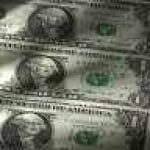 Modern day monetary policy’s something we disparage around here at the Economic Prism. Relegating what price to set the key lending rate to a cadre of unelected technocrats is a contradiction of life in a free society. That’s how we see it, at least.
Modern day monetary policy’s something we disparage around here at the Economic Prism. Relegating what price to set the key lending rate to a cadre of unelected technocrats is a contradiction of life in a free society. That’s how we see it, at least.
Make of it what you will. But we think willing lenders and borrowers can agree on a fair rate of interest on an individual basis much better than Janet Yellen and her fellows can dictate for all. For their part, the Fed’s made a great mess of their efforts to remake the world in their image.
When the stock market crashed on October 19, 1987, newly appointed Fed Chairman, Alan Greenspan took monetary policy in a new direction. He seized the day and planted seeds of disaster…dropping the federal funds rate a half percent from 7.5 percent to 7 percent. The influx of liquidity backstopped the market and soon stock prices were again moving up and to the right.
The stock market’s quick recovery made Greenspan the maestro. Wall Street cheered. Widows poured their savings into stock mutual funds. Bob Woodward even wrote a book celebrating Greenspan’s greatness.
More importantly the “Greenspan put” became the unofficial policy of the Federal Reserve. Specifically, whenever a crisis occurs the Federal Reserve pumps liquidity into the markets. Bernanke and now Yellen have continued this practice.
Mile Marker One
Time and time again the Fed has pumped up financial markets that were in dire need of going down. They did so after Black Monday, the Gulf War, the Mexican crisis, the Asian crisis, the Long Term Capital Management crisis, Y2K, the burst of the internet bubble, the 9/11 attacks, the 2008 credit crisis, and repeatedly since the housing bust and into the present. While this may have limited the pain of each individual crisis, what it did was promote greater risk and market instability.
The stock market’s again on the ropes. The obligatory rally everyone expected on Tuesday fizzled out into a 200 point loss on the Dow. Not until Wednesday did the big boost everyone clamored for occur. Yesterday followed it up with another boost.
But don’t be fooled. This rally does not mark the end of the market’s decline. Nor does it mark the beginning of a renewed rise to new heights. Rather it marks mile marker one on the long, windy, and wild ride down mountain for the stock market.
What the Fed does about it will be a great spectacle. It is not 1987, they do not have 7.5 percent interest rates to gut and cut. Nope. Those days are long gone.
The federal funds rate’s already firmly pressed down at zero…where it has been for the last seven years. They must go negative. But how can they do that?
They need to overtly penalize savers. They need to make holding money such a rip off that the only logical thing to do is to spend it…and then borrow more and spend that.
Manna from Heaven
So for now the Fed is doing what it does best. It is dithering. In particular it is hinting that it will back off on earlier promises to raise rates in September. Of course, the stock market loves it. Here’s one account from the New York Times…
“Once again, the Federal Reserve helped save the day for investors.
“The United States stock market soared in late trading on Wednesday, shrugging off earlier declines in China and Europe. The powerful rally, which came after several days of severe plunges in the world’s major stock markets, was inspired by soothing words from an influential Fed policy maker.
“At a news briefing in New York, William C. Dudley, president of the Federal Reserve Bank of New York, said that the recent turmoil in the financial markets was a risk to the United States economy. Crucially, he added that he found the prospect of raising interest rates next month ‘less compelling.’
“Mr. Dudley’s words were manna for investors who had been starved of good news in recent days.”
Thus manna from heaven continues on.
Sincerely,
MN Gordon
for Economic Prism





Pingback: Amplified Losses—–The Fed Painted Itself Into A Corner And Now Comes The Carnage | David Stockman's Contra Corner
Pingback: Amplified Losses